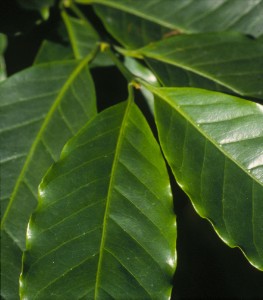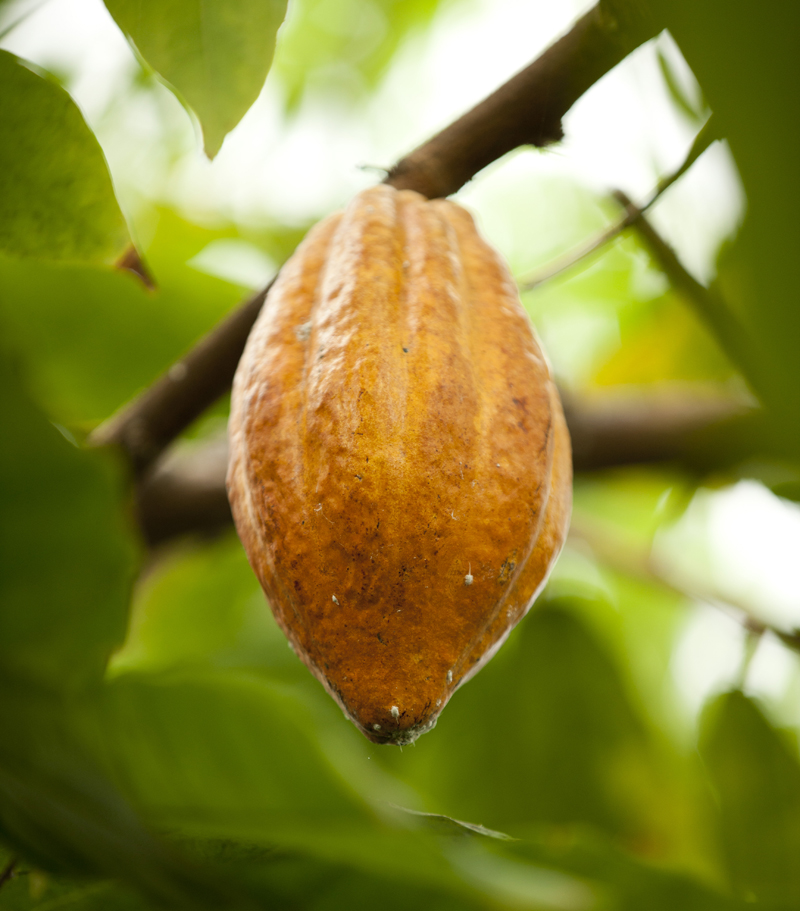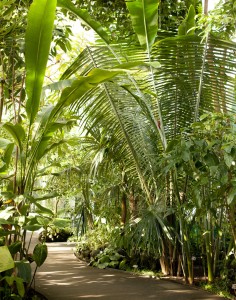The Buzz
Posted in Interesting Plant Stories on June 29, 2015 by Christian Primeau
Christian Primeau is NYBG‘s Manager of the Enid A. Haupt Conservatory.

The dictionary in my office defines an alkaloid as “one of a large class of organic, nitrogen-containing ring compounds of vegetable origin and sometimes synthesized that have a bitter taste, are usually water-insoluble and alcohol-soluble, that combine with acids without the loss of a water molecule to form water-soluble hydrochlorides, hydrobromides or…”
Need I continue?
Based on this definition, you might conclude that a blog post about an alkaloid is as exhilarating as collecting paperclips. Who could blame you? But alkaloids are nothing if not incredible. Mind you, this is coming from a man who, I’m ashamed to admit, spent much of college chemistry struggling to stay awake or attempting to secure a date with the brunette in the front row (both hopeless endeavors).
I’d be willing to bet most of you love alkaloids, too…or at least one in particular. It’s okay to admit an alkaloid is on your mind the instant you wake in the morning, during that staff meeting or interminable chemistry lecture. It doesn’t make you a bad person. Better than 80% of Americans are in the same boat, because eight out of 10 Americans simply can’t live without their daily coffee. As a recent and very reluctant convert to decaf, I can attest to the fact that without caffeine (an alkaloid!) the world is a far different place. Navigating The City that Never Sleeps without caffeine is like entering a NASCAR race on a rusty tricycle with a broken wheel and no seat. Sure, it can be done—but the risks are incalculable.
As I’m certain you know, caffeine can be found in the leaves, fruit, and seeds of the coffee plant (Coffea arabica), a native of tropical Africa. But there are many other plants that synthesize caffeine to one degree or another. The Cola nut (Cola acuminata), Cacao tree (Theobroma cacao), Guarana (Paullinia cupana), and Yerba Mate (Ilex paraguariensis) are a few of the more commonly recognized. But what actual purpose does the caffeine serve? It isn’t essential to the plant’s function, so why is it there?

As it turns out, the same intriguing compound that provides you with a delightfully fuzzy feeling has quite the opposite effect on some insects. A study conducted by Dr. James Nathanson, neurologist at the Harvard Medical School, determined that “caffeine distorted behavior, depressed food consumption or inhibited reproduction” of a great many insect pests, ultimately leading to their demise. Of course it’s worth stressing that, while caffeine effectively suppresses certain nervous system enzymes crucial for proper insect development, research has shown no undue hazard to humans when ingested responsibly and by healthy individuals.
So no need to panic, fellow coffee lovers (unless of course you happen to be some type of Kafka-esque beetle creature, in which case you have larger problems).
Equally fascinating is the discovery that friendly insects such as honeybees are not negatively impacted by the effects of caffeine. In fact, Dr. Geraldine Wright, Professor of Insect Neuroethology (yes, that is actually a thing) at Newcastle University in England asserts that bees respond positively to caffeine. According to Wright, bees visiting Coffea arabica flowers more effectively remembered the exact location of the plant. Furthermore, those same bees would actively “search for other coffee plants to find more (caffeine-laced) nectar, leading to better pollination.” It seems we’re not the only creatures who experience increased productivity and clearer thinking with a bit of coffee.

It’s truly an ingenious evolutionary feat. The same chemical compound that large mammals (seed disseminators) and bees (pollinators) crave will deter or destroy many pest insects, simultaneously promoting reproduction while ensuring the plant’s foliage remains largely unmolested. The fact that humans don’t “disperse” the seed in a traditional sense (via ingestion and excretion) and actually destroy it during the roasting process is of no consequence. We so cherish coffee that we’ve gone to extraordinary lengths to ensure species proliferation through agricultural endeavors. Simply put, we love the stuff, so we make sure there are plenty of the plants around. It’s a mutually beneficial relationship.
Alkaloids are fascinating and useful, though truly, none are to be taken lightly. In fact, one need only read the news to understand that the abuse of caffeine or use by individuals with health issues can have tragic consequences. However, let us end on a positive note and simply thank the plant kingdom for making those lovely budget meetings just a bit easier to endure. If you feel so inclined, grab a fresh cup, stroll the garden, and visit the Coffea arabica in the Upland Rainforest house of the Enid A. Haupt Conservatory. There are thousands of incredible plants at NYBG to explore indoors and out and as many opportunities to learn and grow.
Articles cited:
Caffeine and Related Methylxanthines: Possible Naturally Occurring Pesticides Author(s): James A. Nathanson Source: Science, New Series, Vol. 226, No. 4671 (Oct. 12, 1984), pp. 184-187 Published by: American Association for the Advancement of Science.
Caffeine in Floral Nectar Enhances a Pollinator’s Memory of Reward. Author(s): G.A. Wright. Source: Science, Vol. 339, No. 6124 (Mar. 8, 2013), pp.1202-1204. Published by: American Association for the Advancement of Science.

